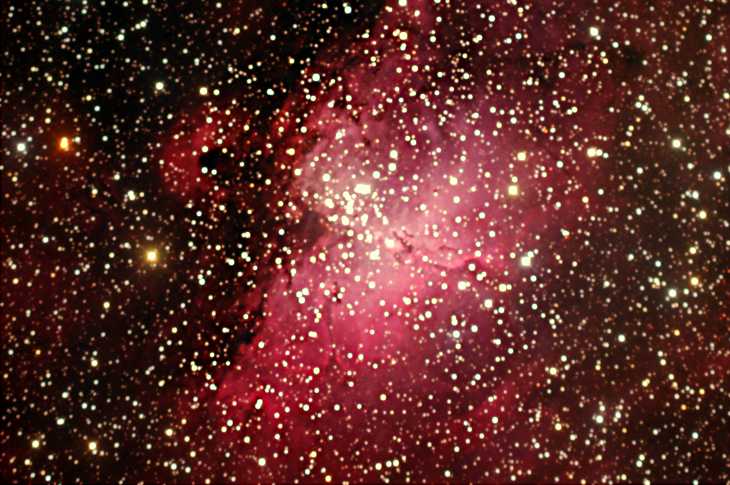
The Eagle Nebula is a "star factory" located about 7,000 light-years away from us, and is about 70 by 50 light-years in size. The nebula is illuminated by a cluster of newborn stars. A larger group of evolving stars are engulfed in the cloud, and are forming as the gas condenses under the influence of gravity until enough matter collects to generate sufficient heat and pressure to ignite nuclear fusion reactions. It is possible to see dark structures called "elephant trunks," which were so named by British astro-physicist Fred Hoyle because of their shape. This object was included in the first list published by Charles Messier.
This is a tri-color CCD composite image taken with an SBIG ST-8E CCD using a Takahashi Epsilon 250 telescope at f3.4 on a Takahashi NJP mount. The CCD was binned 2x2 for all images. This image was taken at the Sunglow Ranch, located in southeastern Arizona.
The star cluster associated with the nebula is designated as M16 (and NGC 6611), and the nebula is designated IC 4703. Most amateurs intend to refer to the nebula when they refer to Messier object M16.
M16 (NGC 6611)
Constellation: Serpens Cauda
RA: 18h 18m 40.3s Dec: -13d 46' 55"
May 21, 2004
Image by Sid Leach
Scottsdale, Arizona
Recent Images.
Complete list of images.
Description of equipment used to acquire images.
Home
Feedback and comments should go to Sid